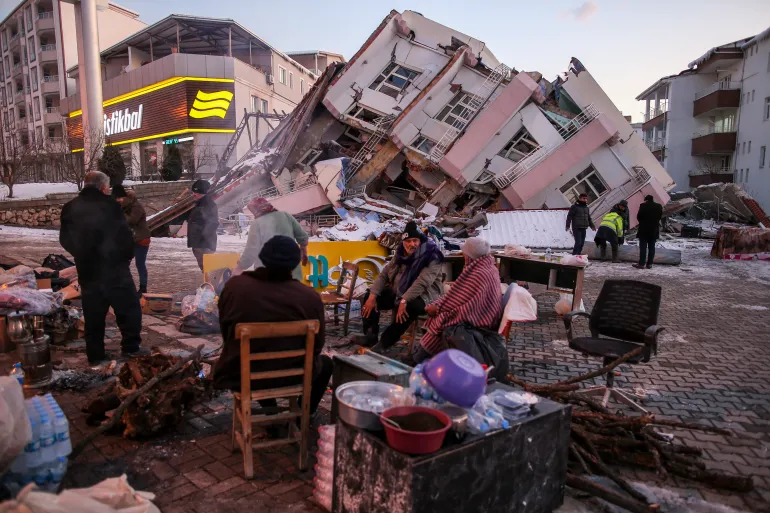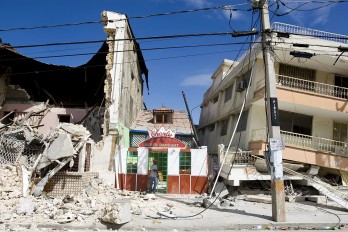Experts answer: “Why did so many buildings collapse in Turkey?”

Following Monday's terrible earthquakes, many of people are reportedly still trapped in the rubble of collapsed buildings around southeast Turkey. The government claims that thousands of people were killed as a result of two powerful tremors and hundreds of aftershocks, and the destruction of at least 6,444 buildings in 10 provinces.
The majority of the structures that collapsed on Monday were built before 1999, when the Western Marmara region was devastated by an earthquake with a magnitude of 7.6 that killed 17,500 people. In order to get Turkey ready for the next major earthquake, the government considerably updated the country's seismic design code after that and started an expansive urban redevelopment project in 2008.
As rescuers continue to search through the rubble looking for miracles, the nation is now trying to understand why this natural disaster – for which Turkey was supposedly preparing for more than 20 years – caused so much damage to the country’s infrastructure.
Was it that the two earthquakes (the first at a magnitude of 7.8 and the second at 7.6, respectively) were too violent for most buildings to survive? Or that the buildings were not up to modern construction standards? Was there negligence on the part of the authorities?
Professor Okan Tuysuz, a geological engineer from Istanbul Technical University, said that Monday’s catastrophe is the result of a tragic combination of all of the above. “We are dealing with truly massive earthquakes here,” Tuysuz told. “The first one was roughly equivalent to the energy release from an explosion of about 5 million tonnes of TNT. The second was equivalent to 3.5 million tonnes. Most buildings would struggle to withstand such force.”
Sinan Turkkan, a civil engineer and president of Turkey’s Earthquake Retrofit Association, has similar opinion. “Not only were the earthquakes extremely forceful, but they also hit in quick succession,” he told. “Many buildings only received light to medium damage in the first quake but collapsed after the second one. According to official estimates, 6,000 to 7,000 buildings collapsed on Monday. However strong, no earthquake could have caused this much damage if all buildings were up to standard,” Turkkan explained. “On paper, Turkey’s seismic design code is up to global standards – it is actually better than most” Turkkan added. “In practice, however, the situation is very different.”
It should be noted that environment and urbanization minister Murat Kurum stated that in November 2022 the government was trying to have every building in the nation "earthquake safe by 2035", after the magnitude 6 earthquake in Duzce, northern Turkey, damaged more than 2,000 structures. Kurum said on social media that "We already rebuilt 3.2 million residences". "250,000 residences across 81 provinces and 992 districts are currently being transformed (to meet current regulations). 6.6 million houses and businesses have been audited. 24 million of our citizens are currently living in earthquake-safe abodes.” But, despite their best efforts, they were unable to stop the catastrophe.
The government did not make participation in its program for urban development necessary, despite the fact that it offered financial incentives. In practice, this meant that only individuals who owned valuable amounts of land that could be improved upon and were in a position to benefit from rebuilding would agree to demolish their previous residences and build new ones in line with the most recent regulations. Many people refused to spend money on strengthening or repair work that didn't appear to be necessary. Experts claim that as a result, more than 20 years after the Marmara earthquake, Turkey is still home to many outdated structures that fall in the event of a significant tremor since they were built with subpar materials. According to experts, the federal and local governments might have done more to ensure that all structures were safe and that earthquake design requirements were followed in every situation.
“This saddens me deeply as an engineer,” Turkkan said. “If we managed to get everyone on board, we could have either reinforced or rebuilt all defective buildings in the past 20 years. We could have saved at least 5,000 of the buildings that we lost on Monday from complete destruction. We could have saved many, many lives.”
“For years we held conferences, wrote reports and sent them to local authorities. We told them big earthquakes will inevitably hit cities like Hatay and Gaziantep again,” Tuysuz said. “We explained to them however strong, no building built directly on a fault line can survive an earthquake – it would be torn apart. We said we should create accurate fault-line maps for the entire country and transform areas directly on active fault lines into green zones with construction bans. No one listened.”
Also, there were difficulties ensuring that design codes were followed when constructing new structures. “Some relatively new buildings also collapsed in this earthquake, which likely means contractors took shortcuts, tried to economise using sub-par materials and authorities failed to do their due diligence before approving construction projects,” Tuysuz said.
On Monday, several hospitals, office buildings, schools, and even headquarters of Turkey’s Disaster and Emergency Management Authority (AFAD) in Hatay collapsed. “According to the state’s own regulations, public buildings are supposed to be much stronger than private ones,” Turkkan mentioned. “When you are building a hospital, a post office or any other public building, you are instructed to use more concrete, more iron, get more detailed ground studies. This is to ensure those buildings survive any earthquake or other natural disaster and so that they can continue serving people at a time of crisis”.
Tuysuz agreed. “It is completely unacceptable for a public building, a power plant or an airport to collapse in an earthquake,” he said. “There are very strict regulations in place to prevent this. The scenes we are witnessing today in the southeast are proof of the state’s shortcomings in implementing its own rules even in constructions over which it has complete control.”
There are around 20 million buildings in Turkey. In Istanbul there are 1.2 million, according to the Kandilli Observatory and Earthquake Research Institute at Bogazici University. Its experts claim that several of these buildings aren't equipped to withstand significant shocks. Reinforcing or repairing all at-risk buildings in all earthquake-prone areas would be technically difficult, logistically difficult, and expensive. That is a chore that cannot be ignored or delayed, though. According to Turkkan, “The government needs to be more forceful in making people get their buildings audited, reinforced and if necessary rebuilt”.
Sources: aljazeera.com, bbc.com
Image Gallery
Media
- Turkey-Syria earthquakes: Why did buildings collapse?
- Turkey earthquake: Why did so many buildings collapse? | DW News
Want to read more like this story?

Earthquakes: five deadliest earthquakes ever recorded around the world
Feb, 24, 2022 | NewsEarthquakes are one of the most dangerous natural disasters. More than 100 earthquakes of the magni...

5.8-magnitude earthquake strikes Ecuador coast: damaged buildings, huge loss of property, no tsunami
Mar, 28, 2022 | NewsA huge loss of property was suffered when an earthquake of magnitude 5.8 struck Ecuador coast on Sa...

Messina earthquake (1908): a civil engineering landmark
May, 26, 2023 | EducationThe 1908 Messina earthquake, also known as the Great Reggio earthquake, is considered as one of t...

Istanbul: One fatality and at least 8 injuries after five-storey building collapse
Jun, 02, 2024 | NewsOn Sunday 2nd of June, a 36-year-old building collapsed in Istanbul, Turkey at 8:40 a.m. (0540 GMT)...

Buildings Prone to Earthquakes
Aug, 24, 2015 | NewsThere is a significant percentage of buildings in India that is prone to earthquake since these buil...

New study by EEFIT shed light on the main reason that cost 50,000 lives due to Turkey -Syria earthquake
Feb, 07, 2024 | NewsAccording to the study, conducted by the Earthquake Engineering Field Investigation Team (EEFIT), t...

New Türkiye earthquake: one fatality and 110 injured as buildings collapse
Feb, 27, 2023 | NewsA magnitude-5.6 earthquake that struck Turkey's southeast on Monday claimed one life, injured 110 p...
Earthquake Engineering
Jan, 01, 2019 | EducationEarthquake engineering is a critical field of civil engineering that focuses on the analysis, desi...

Strengthening of a museum from earthquakes
Nov, 11, 2021 | NewsFollowing structural works, the strengthening of a museum in the historic Western Australia town of...
Trending

Spectacular interchanges around the world

New Release - STAAD.Pro 2024 - 2

ADINA 2025 for Structural WorkSuite

ADINA 2025 New Release!

Concrete Buildings as Rechargeable Batteries

Powerful earthquake shakes central Philippines, dozens killed

Indonesia school collapse: three fatalities and dozens injured



